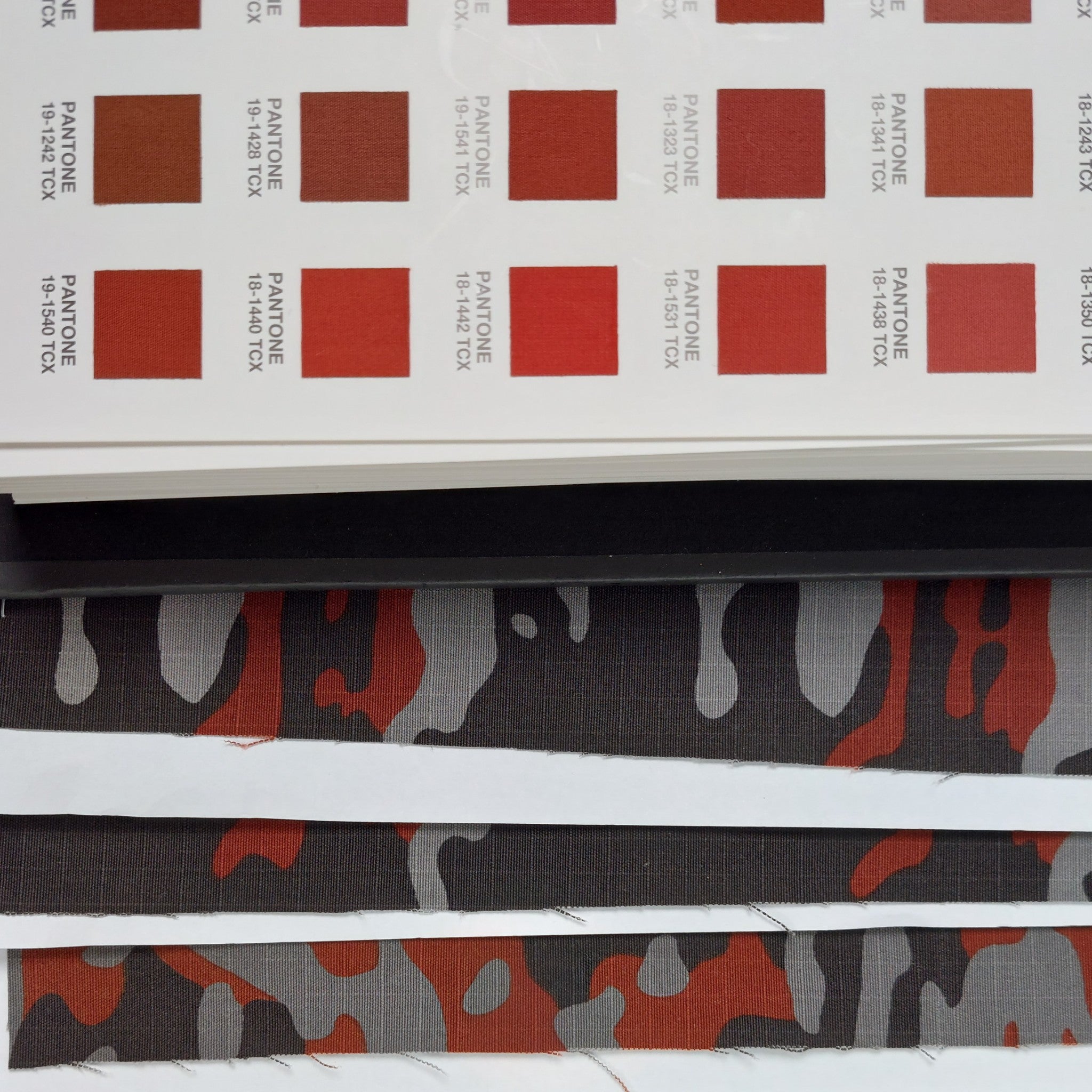It’s been just over a month since we announced our MW2 Camo project, and we’ve been busy completing one of our first major objectives. After six revisions of prints we have our final color matches for the pattern. What’s left to complete for the fabric is the scaling, which is an interesting issue on its own.
We found that color matching physical mediums to how they appear in the digital world is a tricky process for two main reasons:
#1 Your Display’s Color Accuracy, and #2 in-game lighting effects and texture files.
The final hues are the results of a combination of considerations necessary to bring the same feeling to the real-life suit as in the original game. But we’d like to give you a peek into all the work it took us to get there.
![]()
Digital to Physical Color Grading
Every screen is different, modern computer monitors, your phone, or that 480p CRT in your parents basement from two decades ago. They all display colors differently. On top of that, the process to convert digital colors to physical ones has its own considerations. To translate RGB light to dye & pigments we use a few digital software tricks to get started, and then a lot of physical color libraries specifically for fabric.
![]()
Once we find our colors, we send them off to the vendor from there. That’s where the back and forth for fine tuning begins. Every material is different and absorbs and reflects light in its own way. Careful comparison of test prints is made to the original game with color calibrated monitors and color accurate lighting. It took six different test prints in two batches to find our final colors.
Weather & Wear
You may be thinking, “why can’t you just grab the color value from the original texture in game? How did we get our starting values then?” Even with the original texture files themselves, there is some subtle manipulation involved with how the camo appears in game.
The red camo uniforms worn by the spetsnaz aren’t shown as factory fresh. Some, in fact, are pretty worn. The in-game textures have added fading, scuffing, dirt, and an overall “lived-in” fabric texture to the outfits. We had to reverse the fading on some of the textures themselves digitally to determine what this pattern should look like when it’s new — that’s how it’ll look when it arrives at your doorstep.
![]()
Lighting can also drastically change the appearance of the colors. The first mission that the airborne spetsnaz debut in is “Wolverines” taking place on an overcast day with the horizon glowing with the setting sun and structure fires in the distance. So, the lighting in this mission is very warm. Adding a darker, more “yellow” look. Contrast that to say, the multiplayer Map Terminal, and you get a super bright blue sky at midday where on some versions of the camo it almost looks pink at first glance. We took all that into consideration to find a true “Neutral point” of colors for this project.
![]()
Texture stretching & Inconsistent In-Game Scale
The scale of the camo in-game is all over the place. In the base files, it’s the same flat pattern for each image. However, when it is applied to in-game player models it gets stretched like a big spandex onesie. The pattern is commonly smaller on the arms, but much bigger on the legs. Different player models have their own rate of stretch. Most notably the multiplayer riot shield model has a massive scale on his pants. Meanwhile the POV model on the arms is super tiny.
![]()
We are shooting for a happy medium somewhere between the top and bottoms of the character player models in game. Our camo’s splotches look like they’ll end up being just a bit bigger than Multicam, but much smaller than m81 woodland.
The Cliffhanger
We are currently waiting on two more swatches of different scales to be produced. We’ll pick a winner, and from there, the exciting part begins: fabric starts being produced.
We really enjoy sharing this process with everyone as it’s something we rarely get the opportunity to do. We’d like to thank everyone for their interest once again in this project. Be sure to sign up for the special interest list on the project tracker page - it won’t sign you up for any of our marketing emails, so your inbox stays clean if you want it to. It’s taken an enormous amount of work so far, and we’ll keep you updated as we continue production.



Share:
Development Begins, S.S.D.D.
Snatch The Pattern, Grab the Scale: Fabric Finished